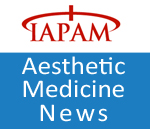Medicis Begins Shipping Dysport for Glabellar Lines
Medicis announced June 15 that it has begun shipment to physicians of DYSPORT (abobotulinumtoxinA) for the treatment of glabellar lines. DYSPORT is an acetylcholine release inhibitor and a neuromuscular blocking agent, approved by the U.S. Food and Drug Administration (FDA) in late April 2009. The approval included two separate indications, the treatment of cervical dystonia in adults to reduce the severity of abnormal head position and neck pain, and the temporary improvement in the appearance of moderate to severe glabellar lines in adults younger than 65 years of age. Medicis has rights to market DYSPORT in the United States for the aesthetic indication (glabellar lines).
“We are pleased to be introducing into the U.S. what we believe may be the most important launch in the aesthetic marketplace since RESTYLANE(R),” said Jonah Shacknai, Chairman and Chief Executive Officer of Medicis. “We have been very encouraged by the initial response from physicians’ preorders, and are eager to provide them with a worthy competitor in this multi-million dollar market. Additionally, we are grateful to our partners at Ipsen for their collaborative efforts in making this launch possible.”
McKesson is the U.S. distributor of DYSPORT for glabellar lines. Physicians in the U.S. may place orders by calling McKesson directly at 1-877-520-0500.
About the U.S. Aesthetic Market
According to the American Society for Aesthetic Plastic Surgery, over 10 million cosmetic procedures were performed in the U.S. in 2008, 83% of which represented nonsurgical procedures. Injections of botulinum toxin type A have been the number one nonsurgical cosmetic procedure for the past five years, with over 2.4 million total procedures in 2008 alone.(1) The U.S. aesthetic market for botulinum toxin type A is estimated to be approximately $300 million to $400 million.(2)
DYSPORT Important Safety Information
The effects of DYSPORT and all botulinum toxin products may spread from the area of injection to produce symptoms consistent with botulinum toxin effects. These symptoms have been reported hours to weeks after injection. Swallowing and breathing difficulties can be life threatening, and there have been reports of death. The risk of symptoms is probably greatest in children treated for spasticity, but symptoms can also occur in adults, particularly in those patients who have underlying conditions that would predispose them to these symptoms.
The dosing Units of DYSPORT are not the same as and are not interchangeable with those of other botulinum toxin products.
Recommended dose and frequency of administration should not be exceeded.
Caution should be exercised when administering DYSPORT to patients with surgical alterations to the facial anatomy, marked facial asymmetry, inflammation at the injection site(s), ptosis, excessive dermatochalasis, deep dermal scarring or thick sebaceous skin.
The clinical effects of treatment may be exacerbated in patients with neuromuscular disorders.
DYSPORT is contraindicated in patients with infection at the proposed injection site, an allergy to cow’s-milk protein or a known hypersensitivity to any botulinum toxin product or its components.
DYSPORT is not recommended for use in children or pregnant women.
In clinical studies, the most frequently reported adverse events (> or = 2%) were nasopharyngitis, headache, injection site pain, injection site reaction, upper respiratory tract infection, eyelid edema, eyelid ptosis, sinusitis and nausea.
To view the Full Prescribing Information and Patient Medication Guide, visit www.DysportUSA.com.
To report SUSPECTED ADVERSE REACTIONS, call 1-877-397-7671 or FDA at 1-800-FDA-1088 or visit www.fda.gov/medwatch.
About DYSPORT (abobotulinumtoxinA)
The active substance in DYSPORT is a botulinum neurotoxin type A complex, which acts at the level of the neuromuscular junction in the targeted muscle. DYSPORT is a neuromuscular blocking toxin which acts to block acetylcholine release at motor nerve ends and reduces muscular spasm.
Used in patient care in the United Kingdom since 1991, DYSPORT has marketing authorizations in 76 countries for therapeutic use and in 27 countries for aesthetic use.
DYSPORT was initially developed and subsequently approved in many markets around the world, outside the U.S., for the treatment of movement disorders such as cervical dystonia (spasmodic torticollis), blepharospasm (involuntary eye closure), hemifacial spasm and various forms of muscle spasticity, including post-stroke arm spasticity, spasticity of the lower limbs (calf) in adults and children with cerebral palsy. It was later developed for the treatment of a wide variety of neuromuscular disorders and aesthetic medicine.





